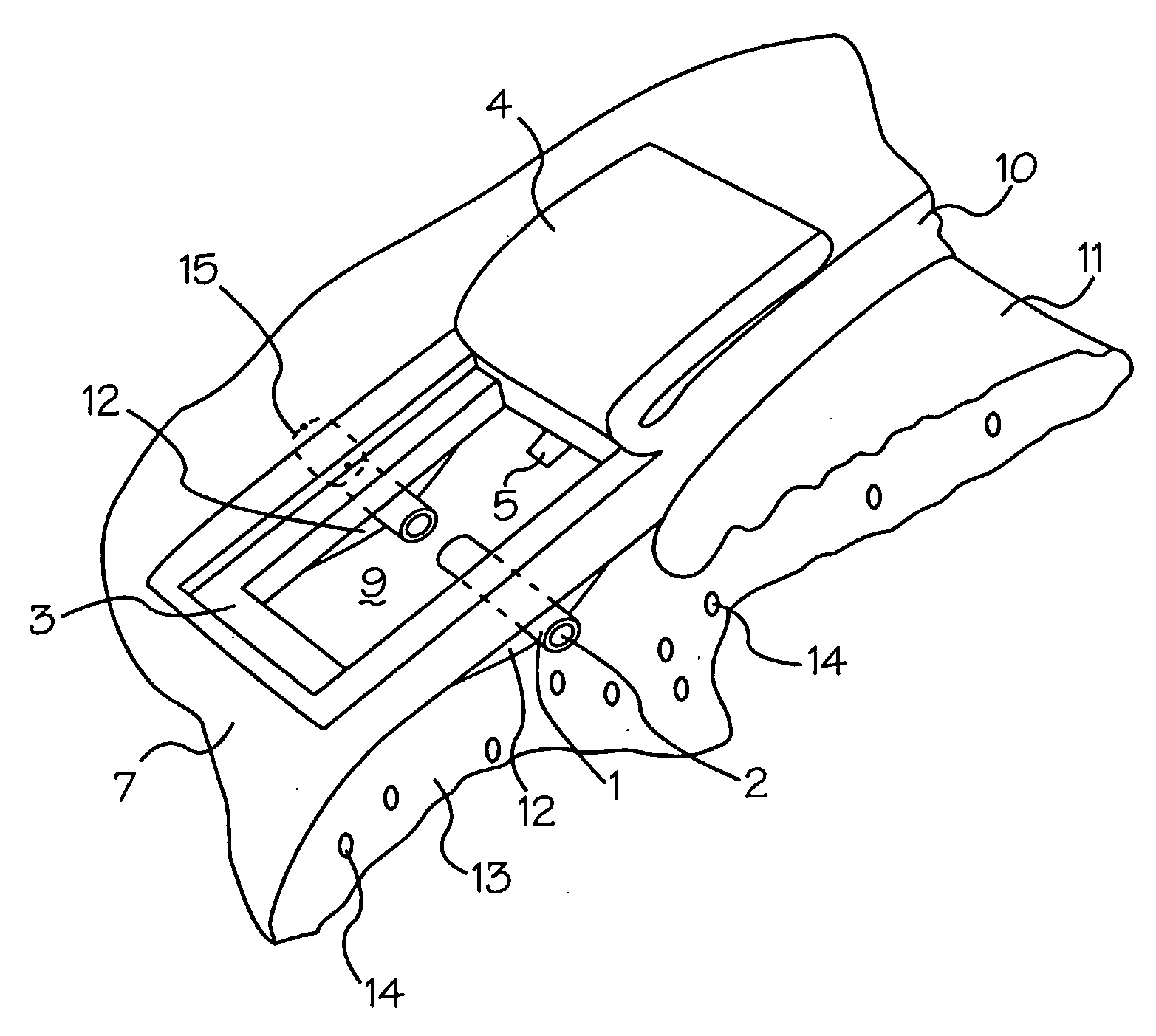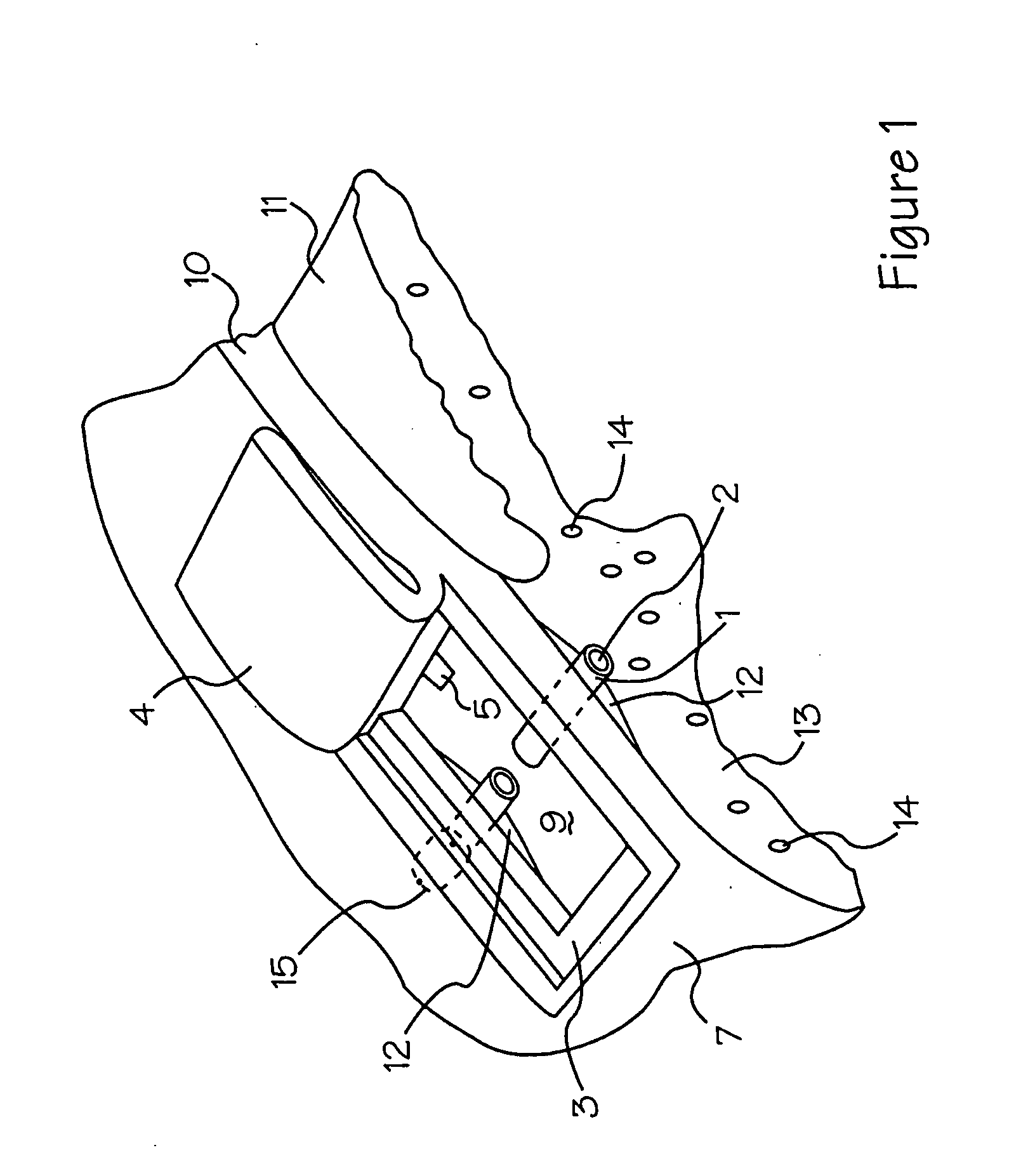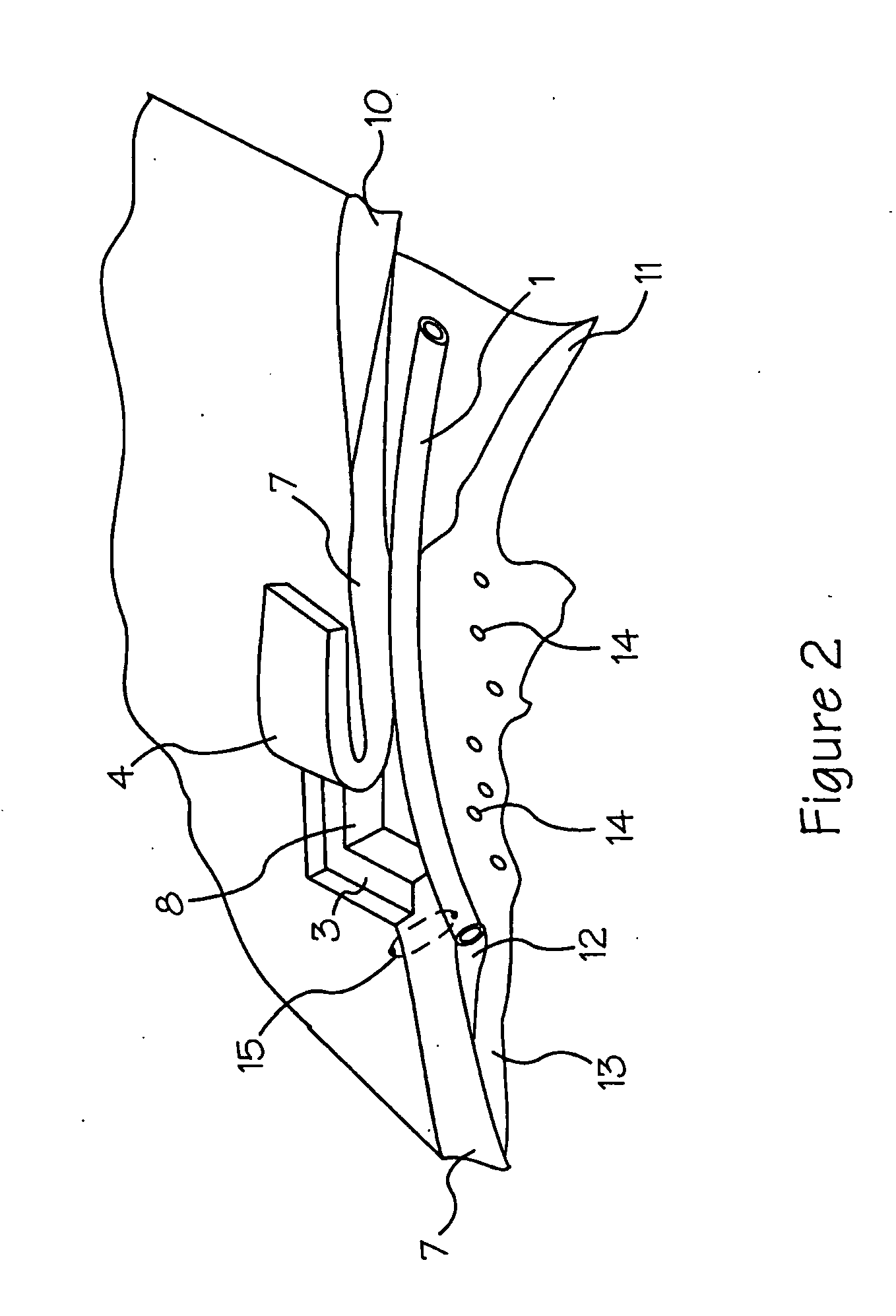Internal shunt and method for treating glaucoma
a shunt and glaucoma technology, applied in the field of glaucoma surgery, can solve the problems of inability to report successful shunting techniques in the literature, inability to effectively treat glaucoma, and flawed techniques, and achieve the effect of reducing intra-ocular pressur
- Summary
- Abstract
- Description
- Claims
- Application Information
AI Technical Summary
Benefits of technology
Problems solved by technology
Method used
Image
Examples
Embodiment Construction
[0033] Generally speaking, a surgical technique and apparatus is described wherein an indwelling shunt is placed in the eye of patients having glaucoma. The shunt diverts aqueous humor from the anterior chamber to the suprachoroidal space from which it is removed by the blood flowing in the choroidal and uveal tissues. This decreases the intra-ocular pressure. The indwelling shunt maintains the area of exposure of aqueous humor with the uvea by physically preventing scarring of the surrounding tissues. The method utilizes the 25 mm Hg driving force of the protein colloidal osmotic pressure of the blood to drive aqueous humor into the blood.
[0034] In FIGS. 1 through 4, a portion of an eye is shown being surgically prepared with a hollow tube (indwelling shunt) 1 for the treatment of glaucoma. The hollow tube 1 has an interior open space 2 in which fluid (not shown) is transferred. The tube 1 diverts aqueous humor from the scleral lake 8 (FIG. 4) to the suprachoroidal space 12, as be...
PUM
 Login to View More
Login to View More Abstract
Description
Claims
Application Information
 Login to View More
Login to View More - R&D
- Intellectual Property
- Life Sciences
- Materials
- Tech Scout
- Unparalleled Data Quality
- Higher Quality Content
- 60% Fewer Hallucinations
Browse by: Latest US Patents, China's latest patents, Technical Efficacy Thesaurus, Application Domain, Technology Topic, Popular Technical Reports.
© 2025 PatSnap. All rights reserved.Legal|Privacy policy|Modern Slavery Act Transparency Statement|Sitemap|About US| Contact US: help@patsnap.com



